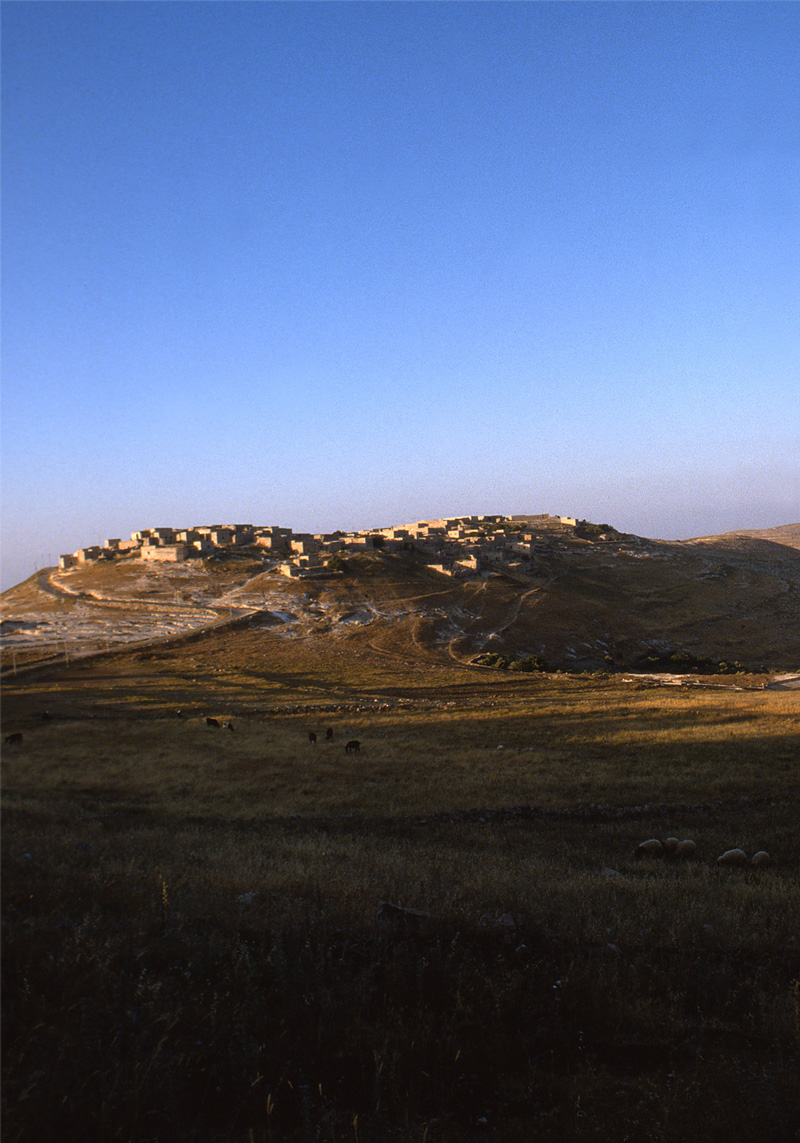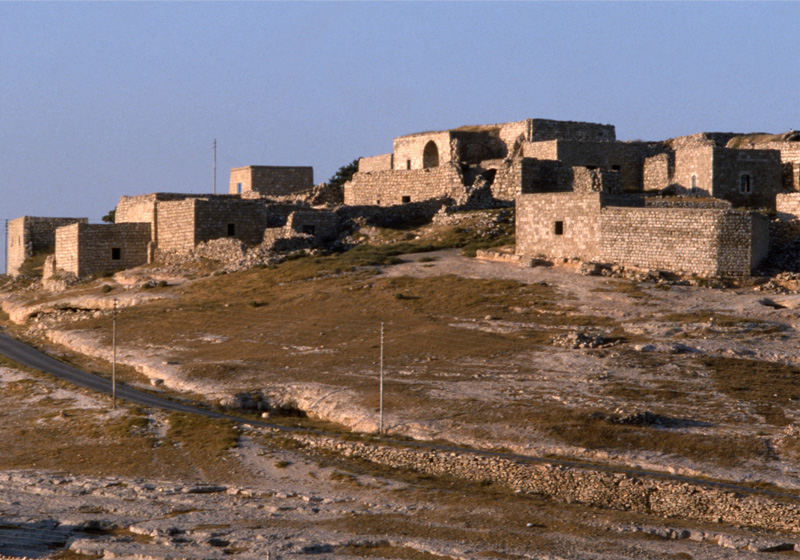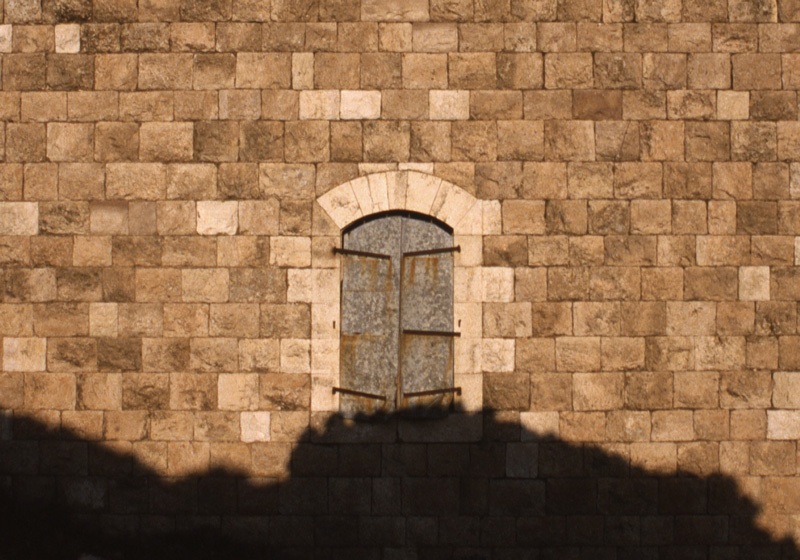Architecture of Sovereignty
Samad is a small village built atop a hill at the northernmost region of Ajloun. The location is rather stunning; on the edge of a rugged landscape raised above the rest of northern Jordan to form what geologists call the “Ajloun Dome”. North as well as east of Samad, the landscape gets tamer; it gradually calms down becoming almost flat around Irbid, Huson and Nu’aimeh. Samad marks the end of oak forestland and overlooks the vast wheat land that stretches well into southern Syria.

On clear days, the vast horizon gets crowned by two mountains –in Syria- in the far distance, the black Jabal Al Drouz in the east, and the white-snowcapped Mount Hermon towards the west, both mountains appear to hover above the plain as if suspended from above. Depending on the amount of haze in the atmosphere, these background features seem to be getting nearer or further away. In such a wide horizon our mind seems to use haze to measure distances, and after a good rainy week, Mount Hermon appears so close that one might locate it just behind the borders with Syria above the Yarmouk Valley.
Samad is a serene place. It is calming, hypnotic, and timeless. This is one of the very few villages in northern Jordan that has retained much of its original traditional architecture. From a distance, the whole village appears as one unit, a continuous fabric of monochromatic shades of limestone and its shadows. The total composition, the architecture and the hilltop, without much recognizable contact line, appears like a ruined castle or an antique tapestry on a rock.

Built between the late 1890s and early 1930s this village is an excellent specimen of an architecture that prevailed in Jordan then. Here we can see one of the last examples of construction that did not depend on manufactured building materials. Apart from the few houses, of the later period, that used some steel beams in their roofs, the entire village is made of local materials; local not just being from Jordan but actually from the immediate surrounding area –from a radius of only a few kilometers.
In this architecture, the added value, achieved by the builders, is actually 100 per cent, since there was hardly any material bought. Unlike the current trends seen in rural Jordan, particularly in the villages of Ajloun, this architecture did not deprive the rural community of its ability to be “housing self-sufficient”. Nor did it deprive it from the role of architecture as a socio-economic institution.
This traditional architecture, built by our great grandfathers, did not pass onto us any financial debt in the form of bills that the rural Jordan has to pay nowadays. Neither did it leave us an environmental debt, a bill that is now accumulating from current construction trends, of which the ability of our grandsons to pay remains to be seen.
Samad builders followed no official zoning or building codes but those of their natural site and natural materials. They were acting within a long tradition, negotiating their housing needs with nature without outsmarting it. Their architecture had evolved out of a symbiotic relationship with nature and not a parasitic one. They listened to the planning hints of their environment. Hints that have accumulated as traditions for generations.

The transition from these architectural traditions into the current housing trends of cement architecture, that came more as a replacement than as an improvement, now appears disappointing, producing the current rural architecture that might prove to be an embarrassing experiment to pass on to our children –aesthetically, economically and environmentally.
In the absence of proper planning in rural Jordan (land-use and building regulations) that takes into consideration the environmental and socioeconomic needs of the region and not international codes and specification of building materials from the global market, and in light of the amazing ability of the reinforced concreters to deprive people of their aesthetics, jobs and economic independence, the traditional architecture of Samad remains a reminder of times long gone, times when homes were homemade, when women were part of the builders team and when villages were productive cells and not merely market creations of others.
A visit to some of the Villages between Irbid and Ajloun takes a full day and can be combined with a tour of the Rabad Castle in Ajloun. This destination, the village of Samad, is easy to reach. Drive to Ajloun via Jerash, head north on the road to Irbid. About 10km before reaching Irbid Samad is west of the road, 2 or 3km away, and is clearly visible from the a distance. Visiting traditional villages is an acquired taste. Samad is a destination for those who like rural architecture and can find excitement without experiencing big monuments. From this destination you can get, during this season, your annual supply of olive oil –directly from the villagers at the olive press.